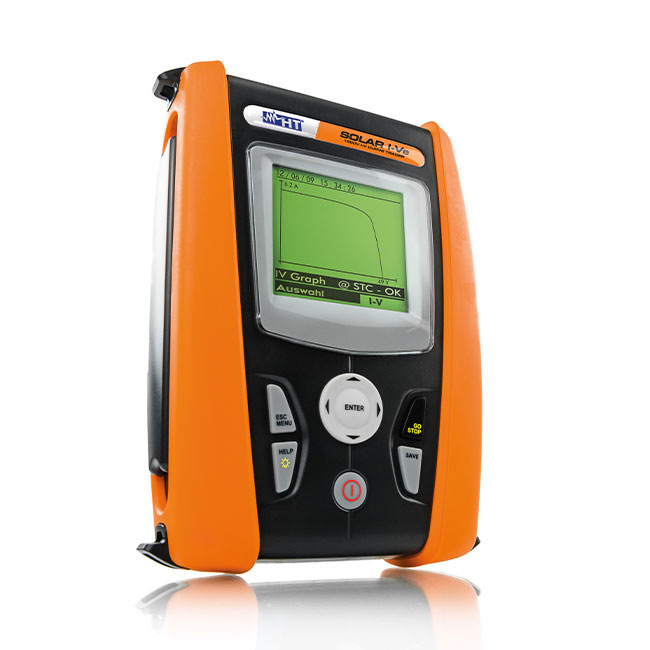With any electrical system installation you need to validate the proper operation of it to confirm the installation has been successful, to diagnose possible issues and to carry out periodic maintenance. The installation and operation of a solar photovoltaic (PV) system is no different, particularly because such a system is a significant investment, and the justification for it is dependent on optimal performance and the cost savings produced by the system producing sufficient levels of electrical energy.
The I-V Curve is important when designing and installing a PV system because each solar PV module has its characteristics of performance identified on a label attached to the panel itself. This shows how the system should perform and is the reference against which you measure when testing the performance. The I-V Curve is one of these specifications and enables us to validate the proper operation and installation of the system, and is also used during periodic maintenance.
What is the I-V Curve?
The I-V Curve is a graphical representation of the relationship between voltage and current in an electrical system. The graph shows voltage on the X axis and current on the Y axis. The curve on the graph is determined by a series of tests and the results of these are plotted on the graph to form a curve. Ultimately, the graph will tell us what the open circuit voltage is and what the short circuit current is, because these two values are where the I-V Curve intercepts the X and Y axis respectively. The gradient of the curve at each intercept can be used to estimate the series resistances and the graph also tells us what the current and voltage is at the maximum power point. These are all reference figures which will be attached to the solar panel as standard specifications.
Using an I-V Curve tracer
I-V Curve tracers, such as the SOLAR I-VE, I-V500W & TIS IV600 advanced I-V Curve Tracer supplied by Test Instrument Solutions, is an efficient alternative to using separate instruments to determine these figures, such as a multimeter, clamp meter and irradiance meter. And tracing the I-V Curve is a common method of determining the functioning of a device in a circuit, in this instance a solar PV panel.
To create the I-V Curve apply a series of voltages across the panel, and at each voltage point record the current flowing through the panel. While varying the electrical load connected to the PV cell from an open circuit to a short circuit, you are able to plot the characteristics and produce an I-V Curve. The supplied load is measured when connected in parallel to the PV panel and the current is measured by the I-V Curve tracer connected in series.
The shape of the curve will vary depending on two main factors; irradiance (the amount of radiant energy from the sun being received by the panel) and the temperature. In a standard curve the irradiance will affect the current while temperature will affect the voltage.
Once tested, you can compare the curve produced to the expected results curve. The I-V Curve produced will show how the PV panel’s performance differs from a benchmark graph, and how it differs (ie. current or voltage) will show how reliable the panel is as an electrical power generator, how efficient the solar cell is and it will help you diagnose problems with the performance.
Test Instrument Solutions supply a diverse and quality range of solar pv test equipment.
Please note that this section is for information purposes only. Anyone using equipment referred to in this section must be suitably qualified and/or experienced within the respective field. If in doubt before use, please consult a qualified electrician or engineer & thoroughly read all instruction booklets.